Cette publication est également disponible en :
Français
UNESCO inscribed the Land of Frankincense on the World Heritage List in 2000. Located in Oman’s Dhofar region, it is made up of three archaeological sites, Shisr, Khor Rori and Al-Baleed, and a nature reserve, Wadi Dawkah. This recognition by UNESCO attests to the importance of frankincense-centred heritage in Oman as well as the major historical role played by the region in the frankincense trade.
The Incense Trade Route is the name traditionally given to a network of routes linking the south of the Arabian Peninsula to the Mediterranean world and Mesopotamia from the 10th century BCE. The boom in the incense trade can be traced to a momentous development in the Middle East: the domestication of the dromedary. The Incense Trade Route was particularly active during antiquity and continued to expand over the centuries, gradually transforming from an overland route to a long-distance maritime network. What do we mean by incense? Who used it and how? How did the incense trade come about? In what way has it evolved? These are the questions we will attempt to answer in this article.
Incense designates all substances that can be burned to produce fragrant smoke. It encompasses plant resins, wood and animal matter. One of the best known incense materials is the resin frankincense. Also known as olibanum, it is extracted from Boswellia sacra, a small tree in the Burseraceae family which exudes an aromatic resin when the bark is cut. The tree grows throughout the southern Arabian Peninsula, straddling Yemen and the Sultanate of Oman, and in Somalia.
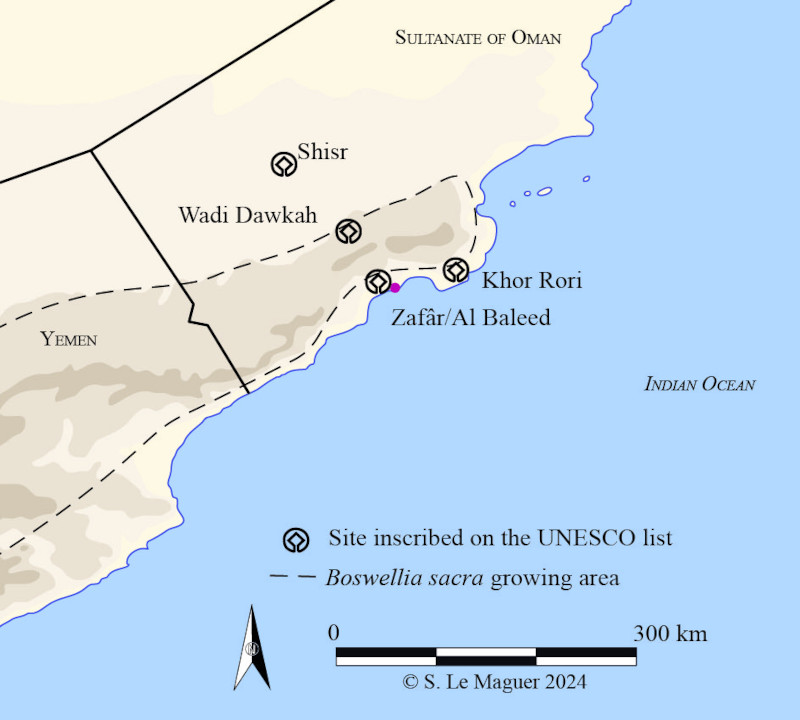
Various other species – totalling 31 – supply the sought-after resin, such as Boswellia papyrifera which grows in Ethiopia. The other emblematic resin from southern Arabia is the myrrh produced by Commiphora myrrha. However, this particular resin is generally used as a salve and far more rarely for incense. The incense trade was not confined to olibanum but encompassed other fragrance substances and spices imported from India. The list of products lengthened over time as trade extended to regions that were further and further away.
During antiquity incense was mainly used for religious rituals and funeral rites. The smoke produced by the incense embodied the offerings made to the gods, carrying humans’ prayers up to heaven. Incense was also burned to accompany prayers to the dead while the salve was used during embalming. Priests were therefore the primary users of these fragrance substances. There is however evidence of domestic use and archaeologists have found incense burners in homes dating from antiquity as well as the Islamic period.
Putting a date on the beginning of the olibanum trade with any certainty is challenging. Nevertheless, several pieces of archaeological and textual evidence tell us that the product was on the move an extremely long time ago. The oldest known trace of frankincense use is to be found on the Ras Al Jinz site in the Sultanate of Oman: a quadrangular four-legged incense burner discovered in a building dating back to the 3rd millennium BCE. Sadly, the burned matter in the bottom of the receptacle was never analysed, and it seems rash to assume that trade was already established at the time.
On the other hand, in the second half of the 3rd millennium BCE incense was undeniably in high demand in ancient Egypt. We can find references to two products in particular Egyptian texts, sntr and ‘ntyw, sometimes identified with olibanum and myrrh respectively. The substances were used in funeral rites and as offerings for the gods. They were imported from the mythical Land of Punt, whose precise location is still under debate but may have been in the Horn of Africa or the western shore of modern-day Yemen on the Red Sea coast. The resources were so essential to Egyptians and so expensive that Queen Hatshepsut (who reigned from 1490-1468 BCE) ordered an expedition to Punt to secure supplies directly and bring back the trees themselves to Egypt. The magnificent frescos on the Deir El-Bahari temple recount the adventure, which ended with the transplanted trees failing to survive the overly arid Egyptian climate.
The growth of the spice trade in the Arabian Peninsula was closely linked to the domestication of the dromedary, which spawned the caravan trade in the late 2nd or early 1st millennium BCE. The first epigraphic traces relating to overland trade date back to the 9th and 8th centuries BCE. A dromedary can carry up to 240 kg of goods and travel up to 48 km a day. Using these hardy creatures represented an economic revolution, making it possible to transport a large quantity of merchandise overland. Epigraphic sources from southern Arabia tell us that in the 8th century BCE the caravan trade was established and structured in the southern Arabian Peninsula. The period from then until the dawn of the Christian era was marked by the “caravan principalities.” In Yemen five kingdoms played a pivotal role in the incense trade: the kingdoms of Saba, Mai’în, Qatabân, ‘Awsân and Hadramawt.
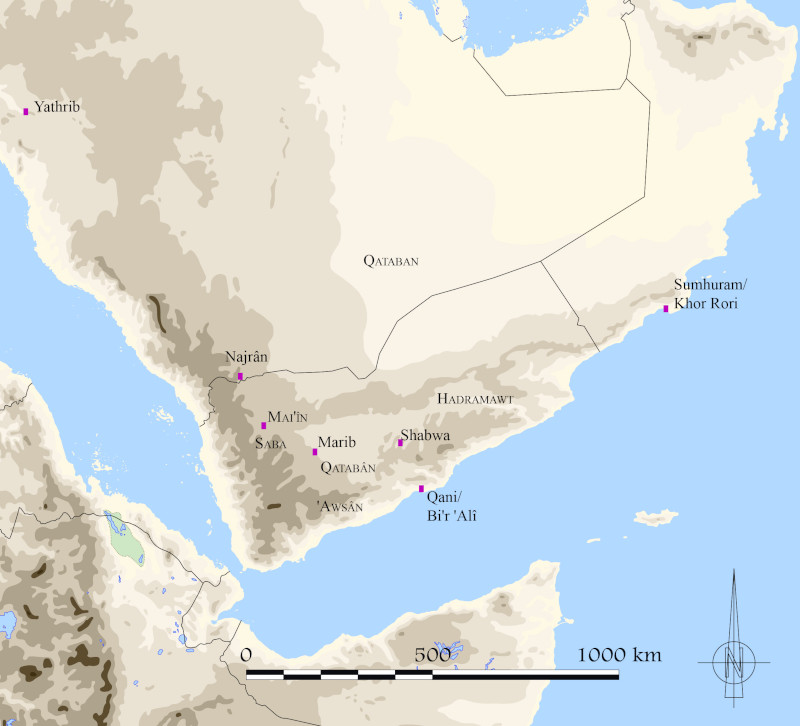
Controlling the caravan routes used to transport goods such as frankincense and myrrh became a key military and political objective. With this objective in mind, King Karibʾīl Watār, who reigned over Saba in the first half of the 7th century BCE, led eight victorious military campaigns. The same sovereign was said to have offered Sennacherib, King of Assyria from 705 to 681 BCE, precious stones and spices as a tribute to his fellow monarch.
The Minaeans also played a central role in transporting and selling spices, as demonstrated in Natural History by Pliny the Elder (23-79), which explains that frankincense was initially sold by the inhabitants of the kingdom of Mai’în.
The kingdom of Hadramawt was established in the valley that bears the same name, Wadi Hadramawt, but its territory spread well beyond the region, reaching Mahra to the east and the Indian Ocean to the south. Its capital, Shabwa, lay at the crossroads of caravan routes linking Mai’în to Najran via the desert and other tracks crossing the high plateaux. A route then connected Shabwa to Marib, capital of the kingdom of Saba. The caravans left Marib and headed towards Najran and on to Yathrib (modern-day Medina) followed by Petra and Gaza, where goods were distributed to the Mediterranean, Levant and Mesopotamia. The kingdoms of northern Arabia – Dedanites, Lihyanites and Taymamites – flourished in their role as intermediaries in the spice trade and settled in oases like Al-‘Ula and Tayma. The Nabataeans living in Petra in Jordan at the late 4th century BCE grew wealthy on profits from the trade and gradually became sedentary. In the 1st century BCE, the Nabataean kingdom covered a vast territory from Damascus in the north to Hijaz in the south and Negev in the east to the Syrian desert in the west.
Once the Christian era got under way there are no mentions of the caravan trade in southern Arabian sources. However, it had not completely disappeared. With the rise of Islam, Mecca became the region’s most important religious centre on top of its role as a major trading outpost. For example, we know that a special caravan for incense and fragrances called latîma travelled in winter to southern Arabia to bring back the precious products. The pilgrims’ ways are to some extent heirs to the incense routes.
Maritime trade began to develop hand in hand with the caravan trade. In addition to olibanum and myrrh, the spices burned in southern Arabia or exported from there had many different origins. Native Indian spices such as cinnamon and pepper were transported by boat to the southern Arabian coast where they were distributed to northern regions. Transporting these products from India required keen navigation skills and raises the question of how maritime trade in the Indian Ocean evolved.
In the 4th century BCE circumnavigation of the Arabian Peninsula was well established by means of multiple short voyages. Towards the late 2nd century BCE pilots had learned to master the monsoon winds.
Then in the 2nd and 3rd centuries, new maritime trade routes to the Indian Ocean opened up. After the troubled period marking the sixth century, the Muslim Empire achieved a political stability that helped trade to flourish. Members of the Muslim elite living in the big cities were consumers of luxury products such as ceramics, fabrics, fragrances and precious stones. The Abbasid Empire (750-1258) stretched from the shores of the Atlantic to the Amu Darya River, controlling maritime routes in the Mediterranean and Indian Ocean as well as overland routes, particularly a significant section of the Silk Road. Long-distance trade really took off and relations between the Arab world and China were strengthened. Arab and Persian traders set up a trading post in Canton. A great many products from east Asia, rarely used until then, were thus introduced to perfume markets, including musk, ambergris, aloeswood, sandalwood and camphor. These exotic ingredients were seen as more prestigious and replaced local raw materials like olibanum. Conversely, olibanum was highly prized in China where great quantities of it were used as part of Buddhist rites.
Oman’s Dhofar region has played a major role in this trade, both overland and maritime, since antiquity, as illustrated by the three archaeological sites that make up the Land of Frankincense: Khor Rori, Shisr and Al-Baleed.
The Khor Rori archaeological site was once home to Sumhuram, an 8,560-square-metre fortified city perched on a rocky spur towering above a cove (khor in Arabic) 31 km east of Salalah. It owes its name to King Sumhuram ‘lhan, who reigned from the 3rd to 2nd century BCE over Hadramawt and founded the city. The frankincense harvested in Dhofar was kept in the city protected by walls as high as eight metres. It was then sent to Qanīʾ (now Biʾr ʿAlī in Yemen), where it was stored before being dispatched to Shabwa. From there, caravans transported it north, as described above. The city of Sumhuram was gradually abandoned over the course of the fifth century due to the sandbar blocking the estuary.
Shisr, also known as Ubar, lies less than 150 km north of Salalah. The site was visited by British explorer Wilfried Thesiger in 1946 and rediscovered in the early 1990s by Nicholas Clapp and Juris Zarins thanks to various aerial surveys. The ruins comprise a collapsed limestone dome that once covered a water source. A large fortified trapezoidal enclosure was built on the dome, measuring 57 m by 45 m. The aquifer under the fortress hollowed out the basement, causing the limestone dome to collapse. Occupation of the site dates back to 300 BCE, and it was inhabited once again in the Islamic period until the 14th century. Archaeological finds include six sandstone chess pieces from the 11th to 13th centuries. The presence of water was the primary source of Shisr’s wealth, which explains the fortified enclosure. Its location not far from the region where frankincense trees grow means it could well have served as a caravan stopping point on one of the many routes linking production areas to places where the frankincense was used. Additionally, the discovery of incense burners during excavation attests to the use of frankincense at the site.
The buoyancy of the maritime incense trade during the Islamic period is illustrated by the wealth of remains at the archaeological site of Al-Baleed, lying in the eastern part of the modern city of Salalah. It is home to the ruins of the mediaeval port of Zafar, which lent its name to the Dhofar region (Zufâr in Arabic). Archaeological excavations have revealed that the port was active from the 10th to 16th centuries. Medieval Chinese, western and Arab textual sources testify to the city’s trading activities, particularly those linked to the sale of frankincense. In the late 13th century, Marco Polo, the celebrated Venetian merchant and explorer, noted that “the province produces great quantities of excellent white incense” before describing how it was harvested once the tree was cut and the resin dried. Just like Sumhuram before it, the port of Zafar was fortified to protect its riches. Sadly, the fortifications were destroyed when attacked by Portuguese ships in the early 16th century.
The Wadi Dawkah Boswellia sacra nature reserve is located 42 km north of Salalah at an altitude of around 680 m. The reserve runs along the wadi covering a total area of approximately six to seven square kilometres (600 – 700 ha). Dhofar’s largest and oldest Boswellia sacra trees are to be found in the reserve. They are a hundred or so years old and reach heights of 4.5 or even 6 metres. A special programme was set up there in 2001. Now run by Amouage, the programme aims to protect, promote and sustainably exploit this natural heritage.
Antiquity is often seen as the golden age of the incense trade. A belief influenced by many ancient writings, particularly those of Herodotus and Pliny the Elder who both sang the praises of a happy, spice-producing Arabia. However, any study of textual sources and archaeological data tells us that the incense trade flourished during the Islamic and medieval periods. In the Christianised Mediterranean world, olibanum was used as part of the liturgy for purifying churches. Interaction with the Muslim world gave Europe the chance to discover a great variety of spices. As a result, Venice’s role as a trading outpost with close ties to the Arab world made it a perfume capital. The greatest demand for olibanum in the east came from China: trade registers from the 11th century show that several dozen tonnes of olibanum landed in major Chinese ports every year. In conclusion, it is worth noting that the incense route does not belong only to the past, but is a still-living heritage just waiting to be explored.
Photo credit: Khor Rori ©Mulook Albalushi
TABLE OF CONTENTS OF OUR MAIN FEATURE “WADI DAWKAH“
- A panorama of the Land of Frankincense
- Frankincense, Oman’s essence
- Olibanum resin: a panacea?
- Eating Frankincense
- The quintessential scents of Oman
- The Incense Trade Route, by Sterenn Le Maguer-Gillon
- Perfume as a way of life in the Middle East
- Wadi Dawkah, The Land of Frankincense (Podcast)
- Oman, strategically positioned in the Gulf
- Sayyid Khalid: “Wadi Dawkah was chosen to reintroduce frankincense globally”
- Renaud Salmon: “Wadi Dawkah is serving as a pilot project for the Omani frankincense industry”
- Dominique Roques: “Working on a multifaceted project focusing on frankincense trees is a wonderful opportunity”
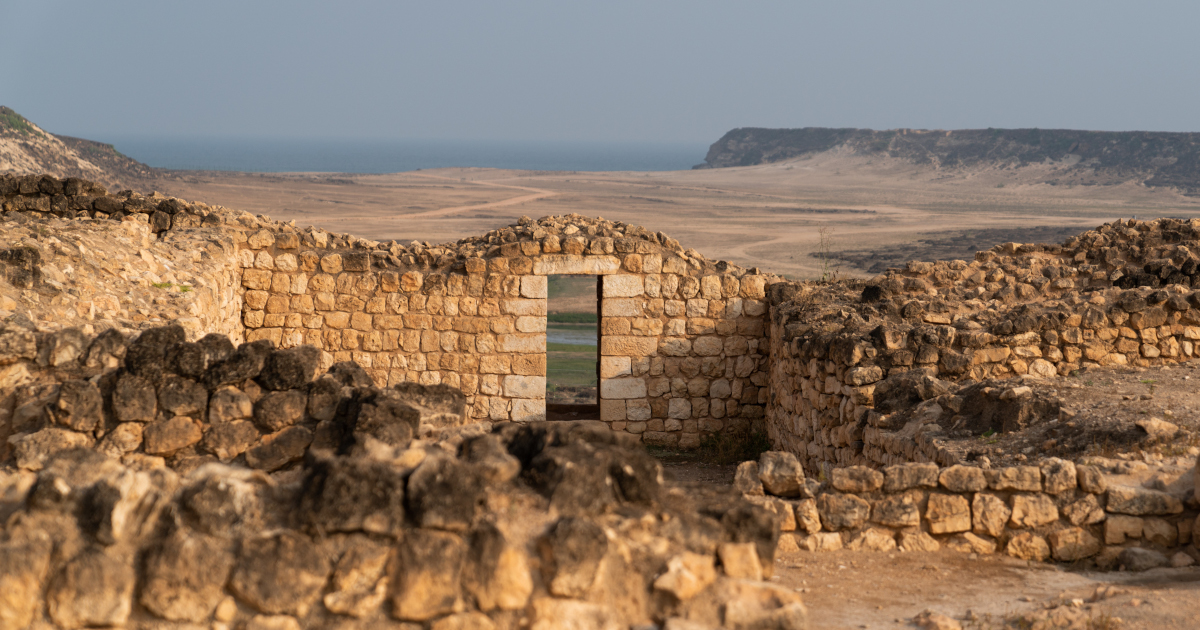

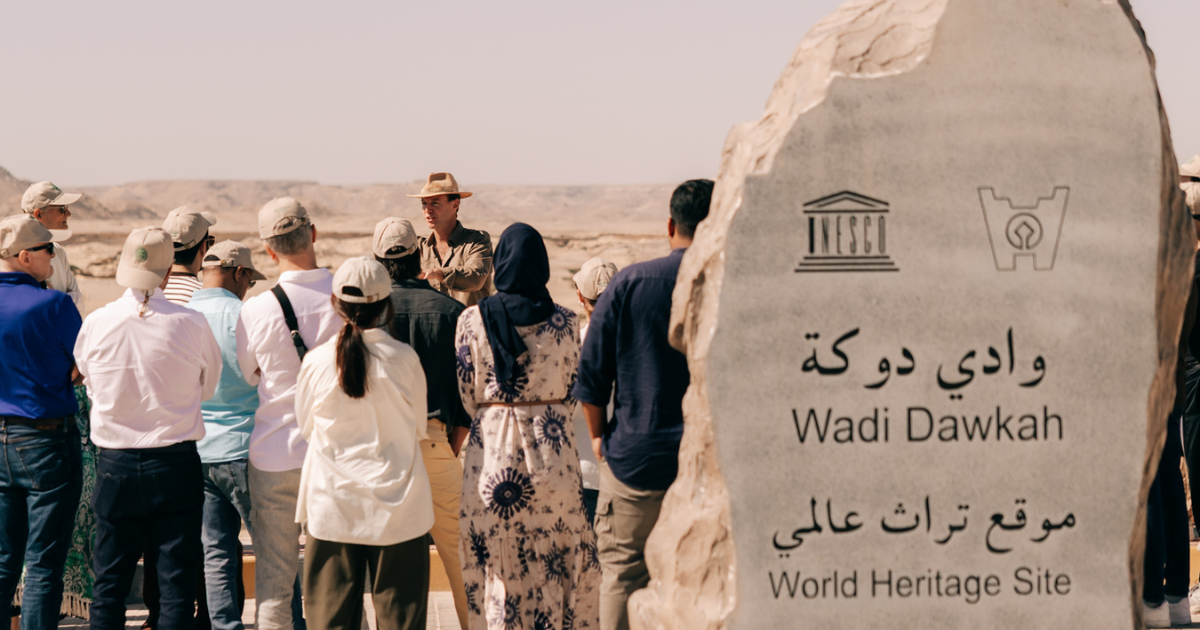

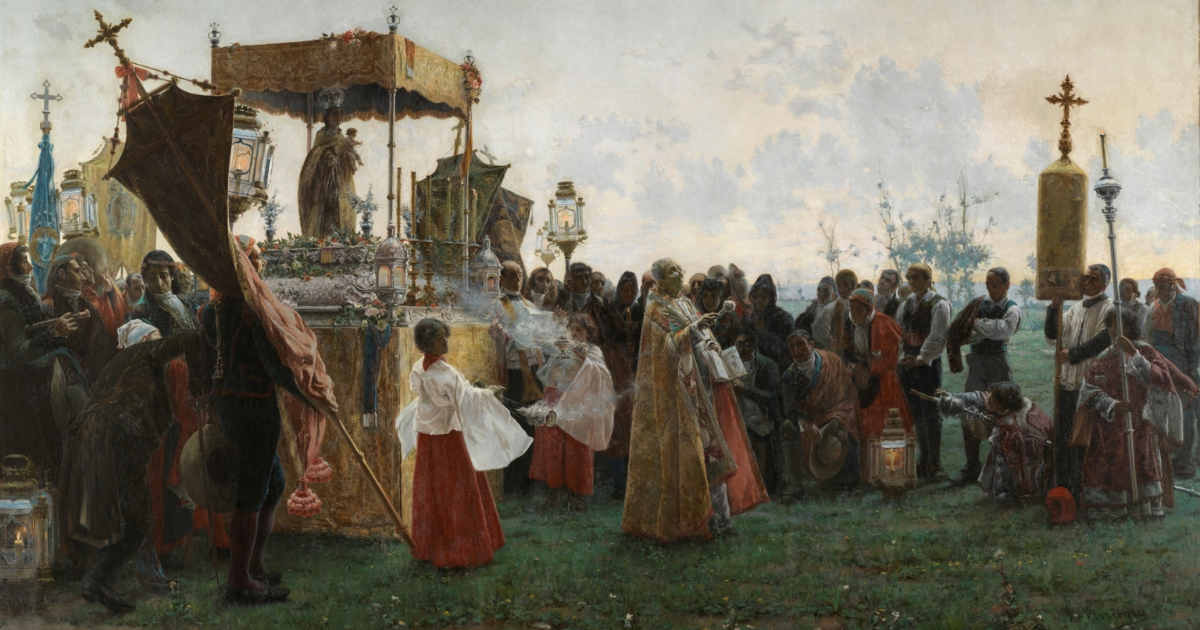



Comments